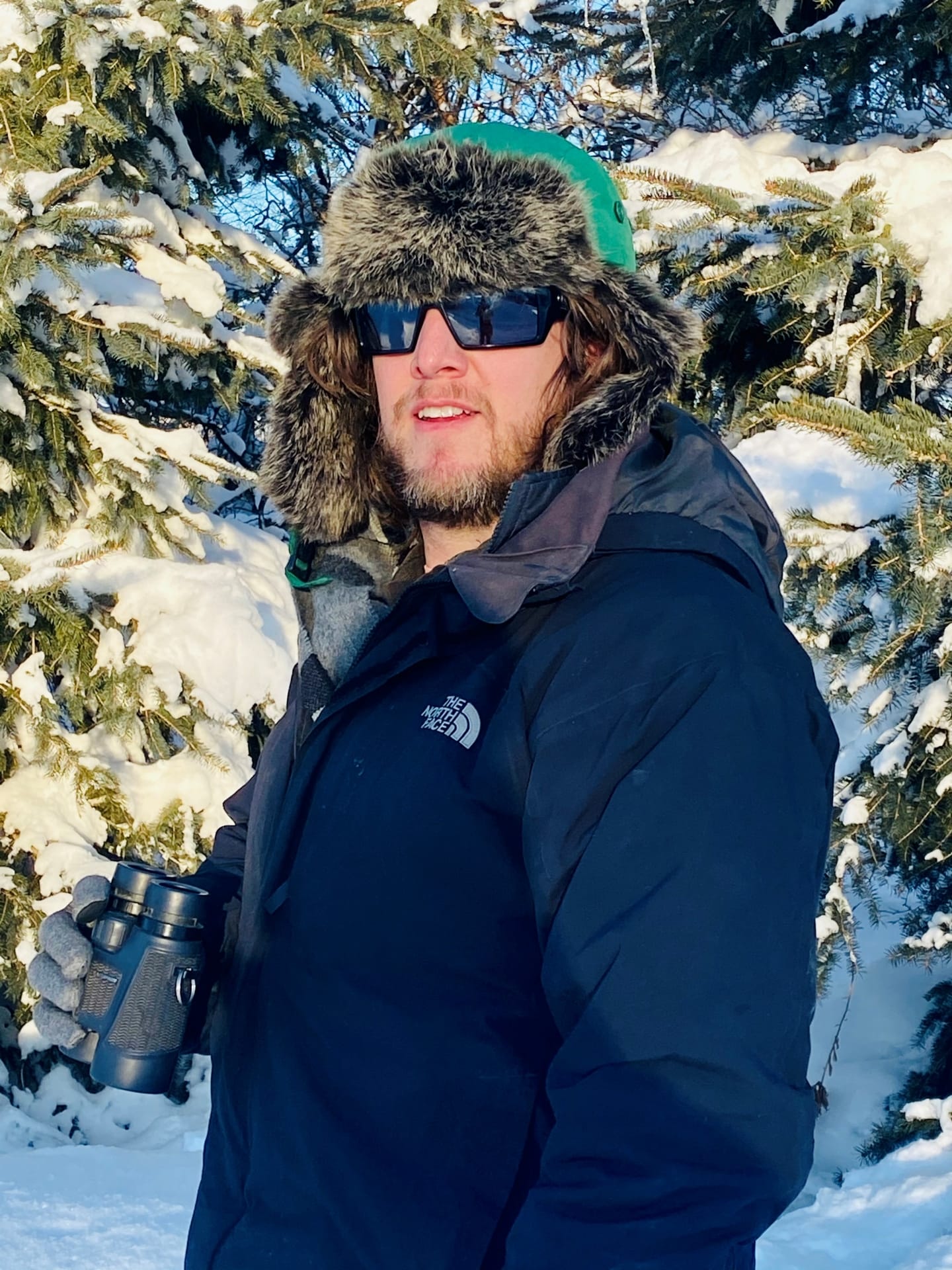The Wild About Winter series is four weeks of outdoor educational opportunities for adults, youth and families in Clearview Township and across South Georgian Bay to learn about birding, wildlife and our local habitat from Simcoe County's Birds Canada Ambassador, Andrew Major.
About Andrew Major, Georgian Bay Wildlife

Andrew Major was born in Frobisher Bay, NWT and grew up in the countryside of Meaford, ON. He currently lives in Clearview Township and brings a wealth of knowledge as a Wildlife Technician who studied at Sir Sandford Fleming College.
Over the past 10 years he has run educational wildlife tours through Georgian Bay Wildlife. Andrew has also been contracted throughout Canada to conduct bird, aquatic invert, fish, and herpetile environmental impact surveys.
He is the Birds Canada ambassador for Simcoe County and has been involved with the Great Backyard Bird Count for several years.
In addition to his love and passion for wildlife, Andrew holds an Honours degree in Classical History for Queen's University and a master’s degree in Roman Late Antiquity Studies from University of Ottawa.
To learn more about Georgian Bay Wildlife, please visit their website www.georgianbaywildlife.com or follow Georgian Bay Wildlife on Facebook.
Participate in Wild About Winter
Georgian Bay Wildlife in partnership with Clearview Township, is excited to launch a 4-week series for local families and area residents to learn more about birds and wildlife in our region. There will be a new topic each week for you to discover and learn about, then get outside and explore your backyard or parks and trails nearby. What will you discover this winter?
The Great Backyard Bird Count Weekend: February 12 to February 15
Every year, the Great Backyard Bird Count presented by Birds Canada happens on Family Day Weekend. It's an annual four-day event that engages bird enthusiasts of all ages around the world in counting birds to create a real-time snapshot of where the birds are. Anyone can participate, from beginners to experts. You can count for as little as 15 minutes on a single day, or for as long as you like each day of the event. It’s free, fun, and easy – and it helps the birds!
PARTICIPATE IN THE GREAT BACKYARD BIRD COUNT
Andrew Major is the Simcoe County Ambassador for Birds Canada and he will be hosting a free webinar to increase awareness and knowledge about the Great Backyard Bird Count. There is also a free Common Birds of Simcoe County (PDF) checklist that you can download to help you track and record the birds you see.
Hey students!
You can earn up to four hours of volunteer time towards your Highschool Volunteer Hours by participating in the Great Backyard Bird Count, please contact the Clearview Youth Centre for help filling in the volunteer hours form. Email the Youth Centre staff.
COVID-19 Statement: Watching birds is a safe and enjoyable activity we can do during the global pandemic. For the 2021 Great Backyard Bird Count, we strongly urge participants to comply with all current and local COVID-19 health regulations and guidelines. This includes, but is not limited to, avoiding non-essential travel, visiting trails and parks close to your neighbourhood and with members of your own household, practicing physical distancing while bird watching and wearing a mask when birding with others.


